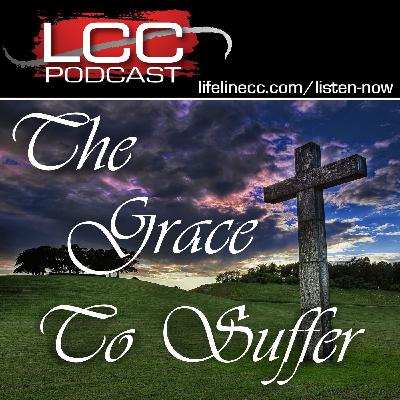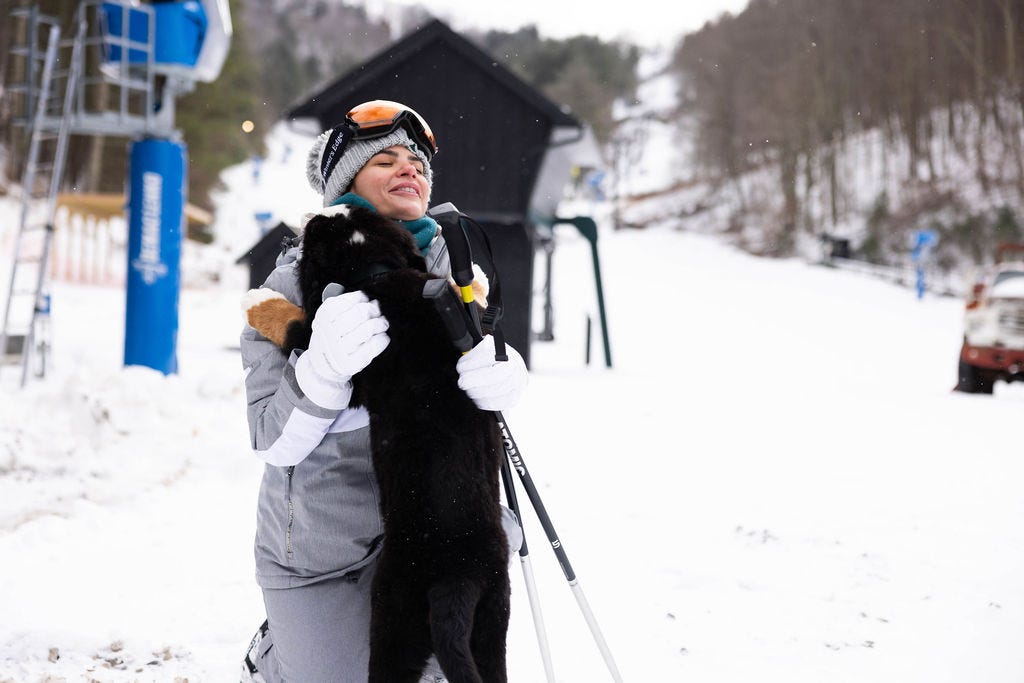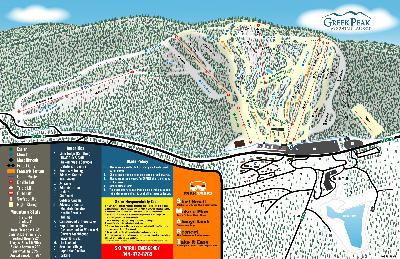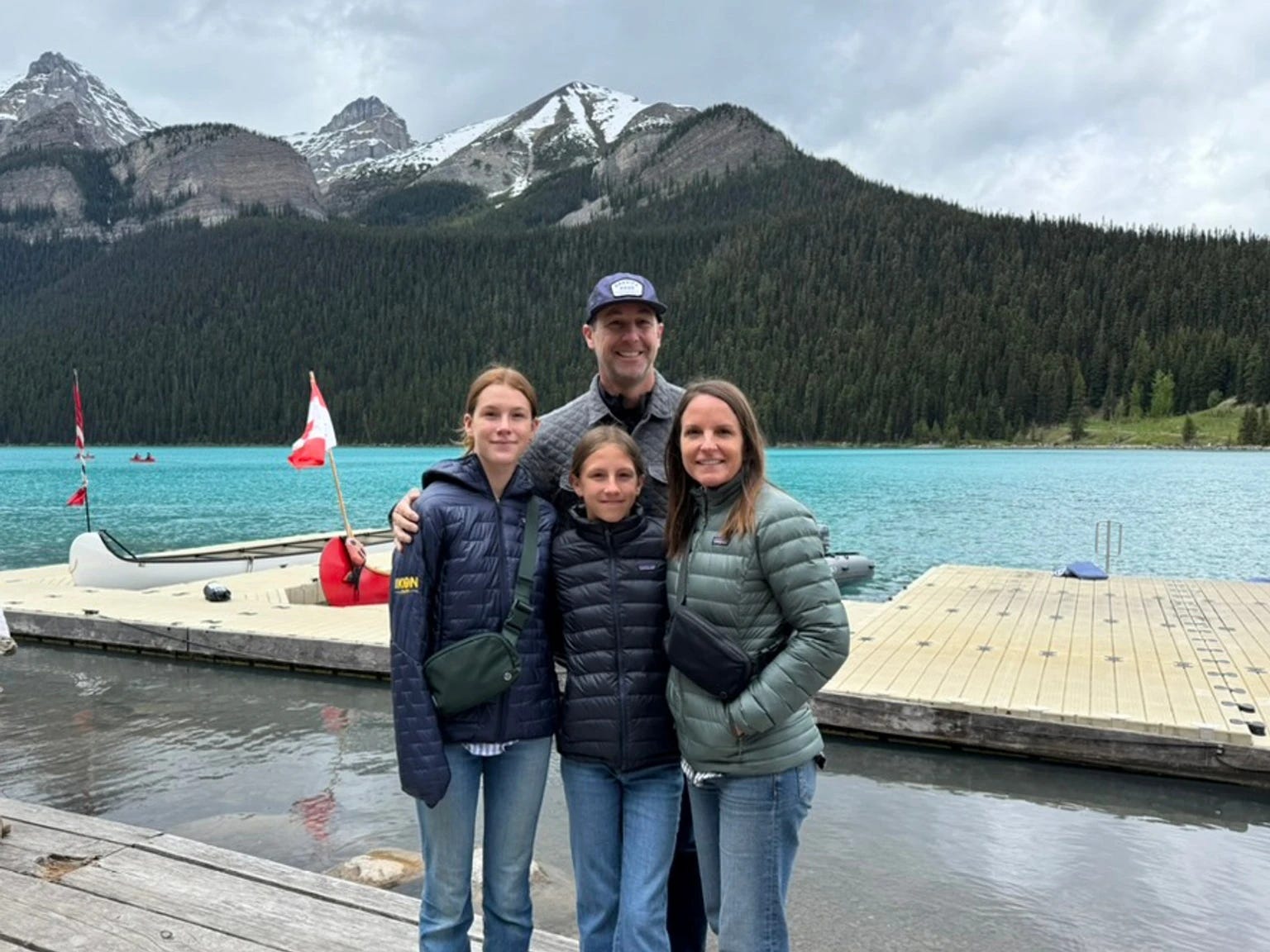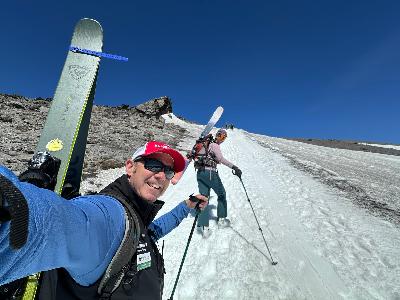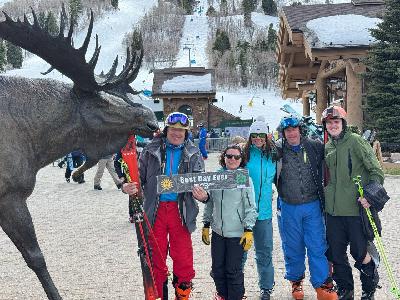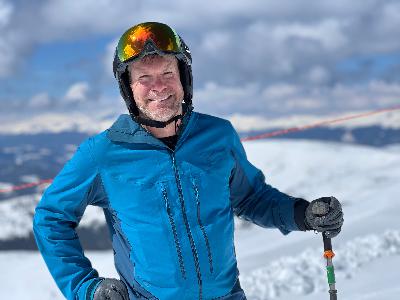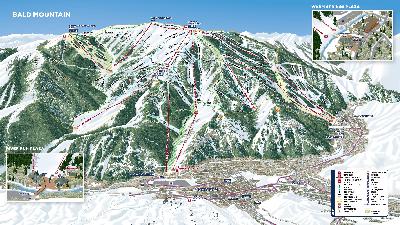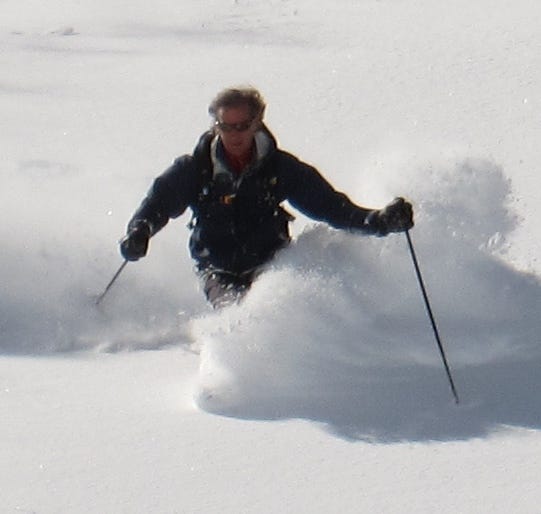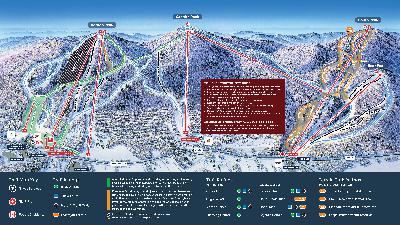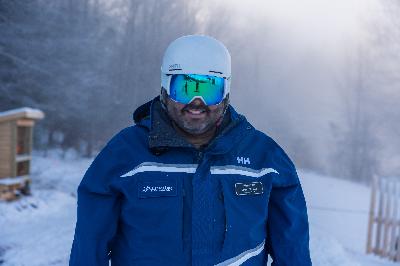Podcast #203: Silver Mountain General Manager Jeff Colburn
Description
The Storm Skiing Journal and Podcast is a reader-supported publication. To receive new posts and to support independent ski journalism, please consider becoming a free or paid subscriber.
Who
Jeff Colburn, General Manager of Silver Mountain, Idaho
Recorded on
February 12, 2025
About Silver Mountain
Click here for a mountain stats overview
Owned by: CMR Lands, which also owns 49 Degrees North, Washington
Located in: Kellogg, Idaho
Year founded: 1968 as Jackass ski area, later known as Silverhorn, operated intermittently in the 1980s before its transformation into Silver in 1990
Pass affiliations:
* Indy Pass – 2 days, select blackouts
* Indy+ Pass – 2 days, no blackouts
* Powder Alliance – 3 days, select blackouts
Closest neighboring ski areas: Lookout Pass (:26)
Base elevation: 4,100 feet (lowest chairlift); 2,300 feet (gondola)
Summit elevation: 6,297 feet
Vertical drop: 2,200 feet
Skiable acres: 1,600+
Average annual snowfall: 340 inches
Trail count: 80
Lift count: 7 (1 eight-passenger gondola, 1 fixed-grip quad, 2 triples, 2 doubles, 1 carpet – view Lift Blog’s inventory of Silver Mountain’s lift fleet)
Why I interviewed him
After moving to Manhattan in 2002, I would often pine for an extinct version of New York City: docks thrust into the Hudson, masted ships, ornate brickwork factories, carriages, open windows, kids loose in the streets, summer evening crowds on stoops and patios. Modern New York, riotous as it is for an American city, felt staid and sterile beside the island’s explosively peopled black-and-white past.
Over time, I’ve developed a different view: New York City is a triumph of post-industrial reinvention, able to shed and quickly replace obsolete industries with those that would lead the future. And my idealized New York, I came to realize, was itself a snapshot of one lost New York, but not the only lost New York, just my romanticized etching of a city that has been in a constant state of reinvention for 400 years.
It's through this same lens that we can view Silver Mountain. For more than a century, Kellogg was home to silver mines that employed thousands. When the Bunker Hill Mine closed in 1981, it took the town’s soul with it. The city became a symbol of industrial decline, of an America losing its rough-and-ragged hammer-bang grit.
And for a while, Kellogg was a denuded and dusty crater pockmarking the glory-green of Idaho’s panhandle. The population collapsed. Suicide rates, Colburn tells us on the podcast, were high.
But within a decade, town officials peered toward the skeleton of Jackass ski area, with its intact centerpole Riblet double, and said, “maybe that’s the thing.” With help from Von Roll, they erected three chairlifts on the mountain and taxed themselves $2 million to string a three-mile-long gondola from town to mountain, opening the ski area to the masses by bypassing the serpentine seven-mile-long access road. (Gosh, can you think of anyplace else where such a contraption would work?)
Silver rose above while the Environmental Protection Agency got to work below, cleaning up what had been designated a massive Superfund site. Today, Kellogg, led by Silver, is a functional, modern place, a post-industrial success story demonstrating how recreation can anchor an economy and a community.
The service sector lacks the fiery valor of industry. Bouncing through snow, gifted from above, for fun, does not resonate with America’s self-image like the gutsy miner pulling metal from the earth to feed his family. Town founder/mining legend Noah Kellogg and his jackass companion remain heroic local figures. But across rural America, ski areas have stepped quietly into the vacuum left by vacated factories and mines, where they become a source of community identity and a stabilizing agent where no other industry makes sense.
What we talked about
Ski Idaho; what it will take to transform Idaho into a ski destination; the importance of Grand Targhee to Idaho; old-time PNW skiing; Schweitzer as bellwether for Idaho ski area development; Kellogg, Idaho’s mining history, Superfund cleanup, and renaissance as a resort town; Jackass ski area and its rebirth as Silver Mountain; the easiest big mountain access in America; taking a gondola to the ski area; the Jackass Snack Shack; an affordable mountain town?; Silver’s destination potential; 49 Degrees North; these obscenely, stupidly low lift ticket prices:
Potential lift upgrades, including Chair 4; snowmaking potential; baselodge expansion; Indy Pass; and the Powder Alliance.
What I got wrong
I mentioned that Telluride’s Mountain Village Gondola replacement would cost $50 million. The actual estimates appear to be $60 million. The two stages of that gondola total 10,145 feet, more than a mile shorter than Silver’s astonishing 16,350 feet (3.1 miles).
Why now was a good time for this interview
In the ‘90s, before the advent of the commercial internet, I learned about skiing from magazines. They mostly wrote about the American West and their fabulous, over-hill-and-dale ski complexes: Vail and Sun Valley and Telluride and the like. But these publications also exposed the backwaters where you could mainline pow and avoid liftlines, and do it all for less than the price of a bologna sandwich. It was in Skiing’s October 1994 Favorite Resorts issue that I learned about this little slice of magnificence:
Snow, snow, snow, steep, steep, steep, cheap, cheap, cheap, and a feeling you’ve gone back to a special time and place when life, and skiing, was uncomplicated – those are the things that make [NAME REDACTED] one of our favorite resorts. It’s the ultimate pure skiing experience. This was another surprise choice, even to those who named [REDACTED] to their lists. We knew people liked [REDACTED], but we weren’t prepared for how many, or how create their affections were. This is the one area that broke the “Great Skiing + Great Base Area + Amenities = Favorite Resort” equation. [REDACTED] has minimal base development, no shopping, no nightlife, no fancy hotels or eateries, and yet here it is on our list, a tribute to the fact that in the end, really great skiing matters more than any other single resort feature.
OK, well this sounds amazing. Tell me more…
…[REDACTED] has one of the cheapest lift tickets around.
…One of those rare places that hasn’t been packaged, streamlined, suburbanized. There’s also that delicious atmosphere of absolute remoteness from the everyday world.
…The ski area for traditionalists, ascetics, and cheapskates. The lifts are slow and creaky, the accommodations are spartan, but the lift tickets are the best deal in skiing.
This super-secret, cheaper-than-Tic-Tacs, Humble Bro ski center tucked hidden from any sign of civilization, the Great Skiing Bomb Shelter of 1994, is…
Alta.
Yes, that Alta.
The Alta with four high-speed lifts.
The Alta with $199 peak-day walk-up lift tickets.
The Alta that headlines the Ikon Pass and Mountain Collective.
The Alta with an address at the top of America’s most over-burdened access road.
Alta is my favorite ski area. There is nothing else like it anywhere (well, except directly next door). And a lot remains unchanged since 1994: there still isn’t much to do other than ski, the lodges are still “spartan,” it is still “steep” and “deep.” But Alta blew past “cheap” a long time ago, and it feels about as embedded in the wilderness as an exit ramp Chuck E. Cheese. Sure, the viewshed is mostly intact, but accessing the ski area requires a slow-motion up-canyon tiptoe that better resembles a civilization-level evacuation than anything we would label “remote.” Alta is still Narnia, but the Alta described above no longer exists.
Well, no s**t? Aren’t we talking about Idaho here? Yes, but no one else is. And that’s what I’m getting at: the Alta of 2025, the place where everything is cheap and fluffy and empty, is Idaho. Hide behind your dumb potato jokes all you want, but you can’t argue with this lineup:
“Ummm, Grand Targhee is in Wyoming, D*****s.”
Thank you, Geography Bro, but the only way to access GT is through Idaho, and the mountain has been a member of Ski Idaho for centuries because of it.
Also: Lost Trail and Lookout Pass both straddle the Montana-Idaho border.
Anyway, check that roster, those annual snowfall totals. Then look at how difficult these ski areas are to access. The answer, mostly, is “Not Very.” You couldn’t make Silver Mountain easier to get to unless you

